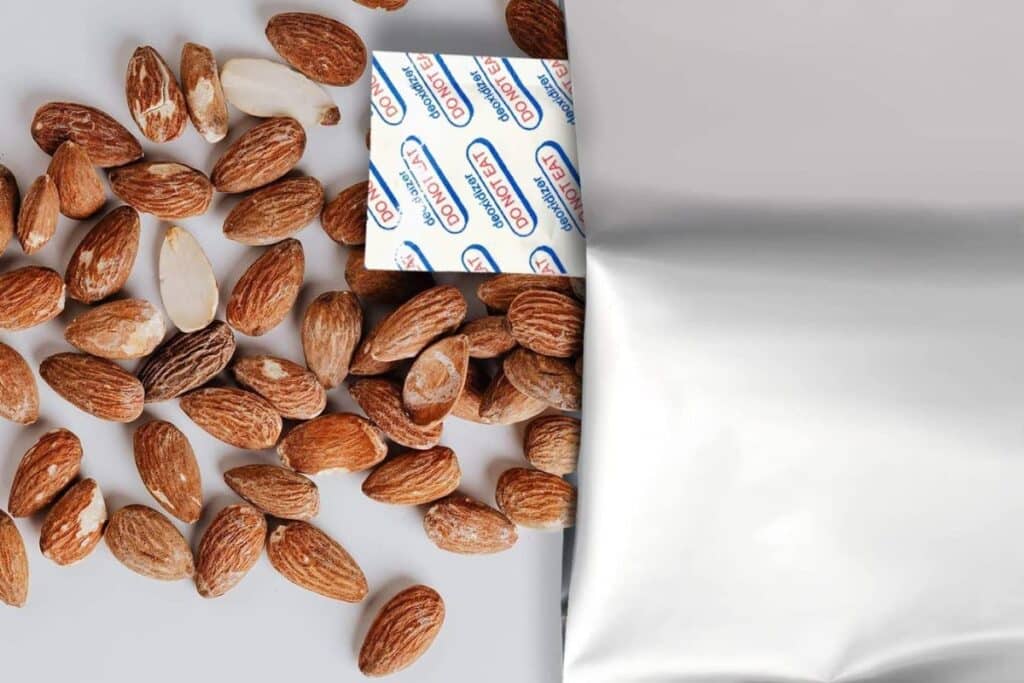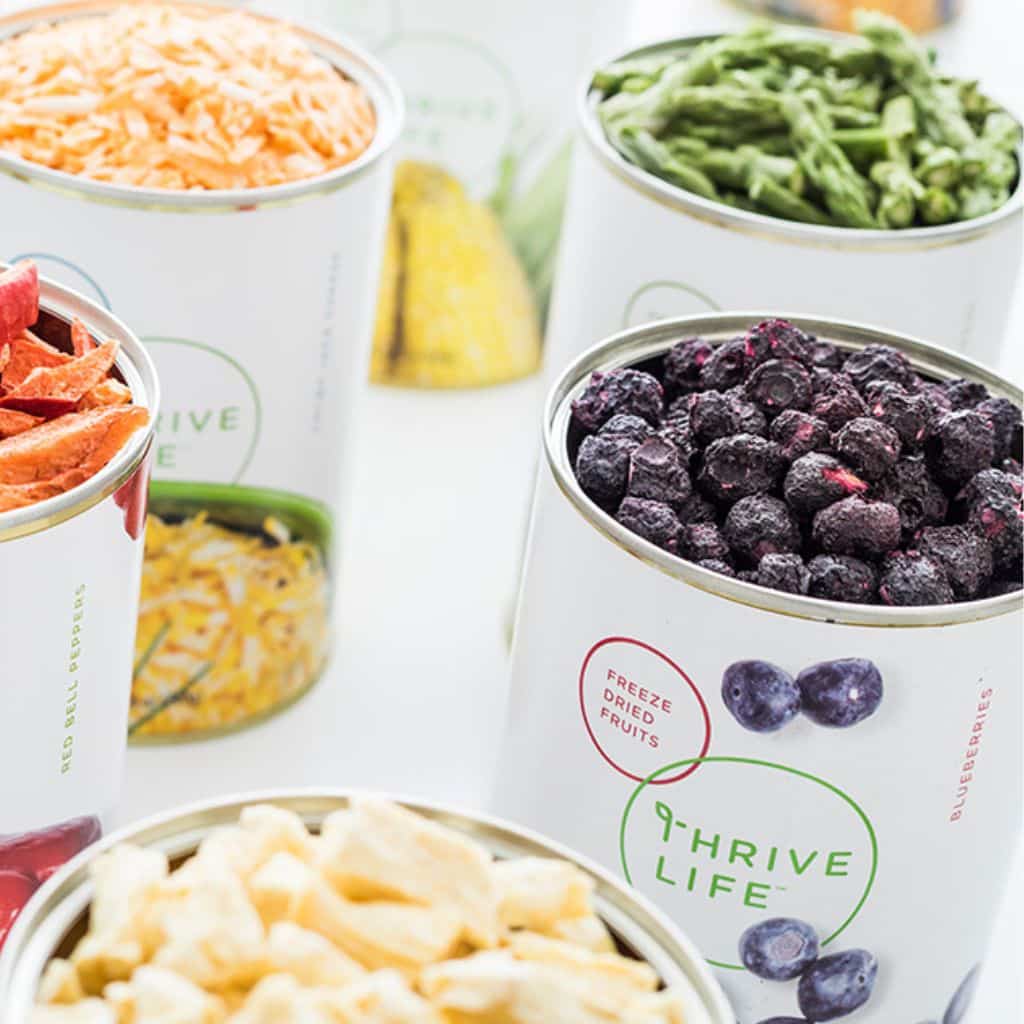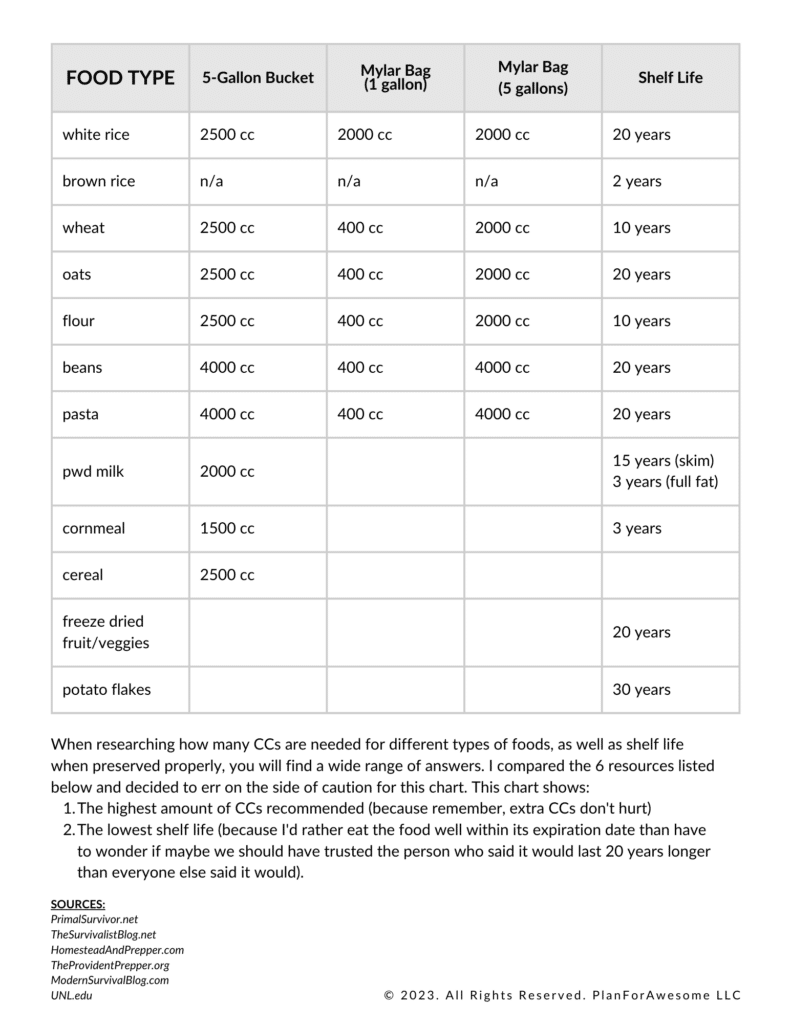Let’s talk about the process of using OAs when packaging up your food.
I mentioned this just above, but I’m going to say it again…You need to have everything prepped and ready before you open your oxygen absorber bag! Otherwise you’re just going to waste all those packets because they will fill up with oxygen before you even get them in the food container.
I’m specifically talking about mylar bagging and bucketing because that is what I have personal experience with. If you are wanting to learn more about canning, this blog post of do’s and don’ts from Food Storage Moms is a great resource.
Step 1:
Gather all your supplies (and knowledge)!
- Food that you’re preserving
- Bags or buckets
- Whatever you need to seal those containers (flat iron, lids, etc)
- Measuring cups
- Be sure you know how many OAs you’re going to need
Step 2:
Set up each bag or bucket that you plan to fill.
Step 3:
Measure your food and pour it into the containers.
Step 4:
Once your containers are full, go ahead and open up the oxygen absorber package. Place the appropriate number (more on this in a minute) of absorber packets on top of your food. Honestly, they can go anywhere in the package, but since you need to seal things up pretty quick, it’s just easiest to toss them on top. Plus, then you know exactly how many packets you dropped in.
Step 5:
Put the unused oxygen absorbers in a mason jar or Ziploc bag for safe-keeping until you’re ready to seal them up. Remember, if stored properly, these will stay good for use up to 6 months.
Step 6:
Once you have your containers filled with food and have placed the OAs, you’re ready to seal it all up for long term storage. Use a heat sealer, flat iron, clothing iron, etc. for mylar bags. Use an air-tight plastic lid for buckets.
Step 7:
After you have everything sealed up tight, you’ll want to label the packages. I like to put the packing date as well as the expiration date on my mylar bags. I don’t want to have to look up shelf life of different items several years in, to determine if my food is still good or not.
*Don’t forget to label what’s inside the bag too! Haha!
Step 8:
Re-package your OAs in something airtight (like a vacuum sealed bag, a mason jar, etc).
Step 9:
Store your mylar bags/buckets in a cool, dry place.
Step 10:
After a few days, double check your containers to make sure that the oxygen absorbers are actually working. This is mainly necessary with Mylar bags. You should see a slightly more compressed package. If not, you might need to add another OA and then re-seal the package.








